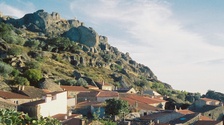اعثر على معلِّمي الإنجليزية
Matthew
Can someone please check the accuracy of this poem (sijo) by Yun Seondo
I need to know that this is exactly how the poem (sijo) is written. It is part of "Winter" from The Fisherman's Calendar. Thank you.
간 밤에 눈 갠 뒤에 경치가 달라졌구나!
<배 저어라, 배 저어라.>
앞 체는 유리처럼 잔잔한 넓은 바다, 뒤에는 겹겹이 둘러싸인 백옥 같은 산이로다. <찌그덩 찌그덩 어야차!>
아, 여기는 신선이 사는 선경인가? 부처가 사는 정토인가? 인간 속세는 아니로다.
١٩ ديسمبر ٢٠١٧ ٢١:٣٧
الإجابات · 2
1
That is a modified version into modern Korean language.
That poem is originally written in old Korean alphabet mixed with Hanja.
Here is a modern Korean spelling version.
간밤의 눈 갠 후(後)에 경물(景物)이 달랐고야
이어라 이어라,
앞에는 만경유리(萬頃琉璃) 뒤에는 천첩옥산(千疊玉山)
지국총 지국총 어사와,
션계(仙界)ㄴ가 불계(佛界)ㄴ가 인간(人間)이 아니로다
Here is a modern Korean transliteration version.
간밤의 눈갠 후(後)에 경물(景物)이 달랃고야
이어라 이어라
압희는 만경유리(萬頃琉璃) 뒤희는 천텹옥산(天疊玉山)
지국총 지국총 어사와
션계(仙界)ㄴ가 불계(佛界)ㄴ가 인간(人間)이 아니로다
And, here is the full poem with original spelling and some comments.
http://www.seelotus.com/gojeon/gojeon/si-jo/eo-bu-sa-si-sa-dong.htm
٢٠ ديسمبر ٢٠١٧
لم تجد إجاباتك بعد؟
اكتب اسألتك ودع الناطقين الأصليين باللغات يساعدونك!
Matthew
المهارات اللغوية
الإنجليزية, الفرنسية, الغيلية (الأيرلندية), اليابانية, الإسبانية
لغة التعلّم
الفرنسية, الغيلية (الأيرلندية), اليابانية, الإسبانية
مقالات قد تعجبك أيضًا

The Power of Storytelling in Business Communication
44 تأييدات · 9 التعليقات

Back-to-School English: 15 Must-Know Phrases for the Classroom
31 تأييدات · 6 التعليقات

Ten Tourist towns in Portugal that nobody remembers
59 تأييدات · 23 التعليقات
مقالات أكثر
